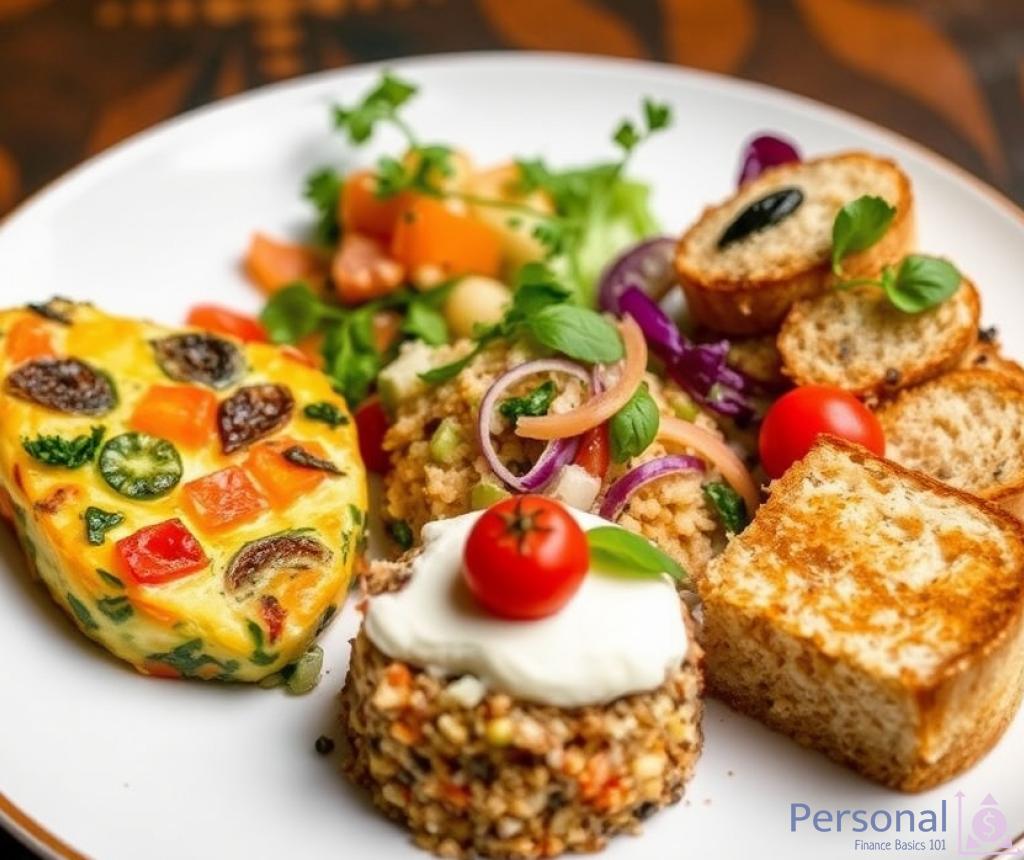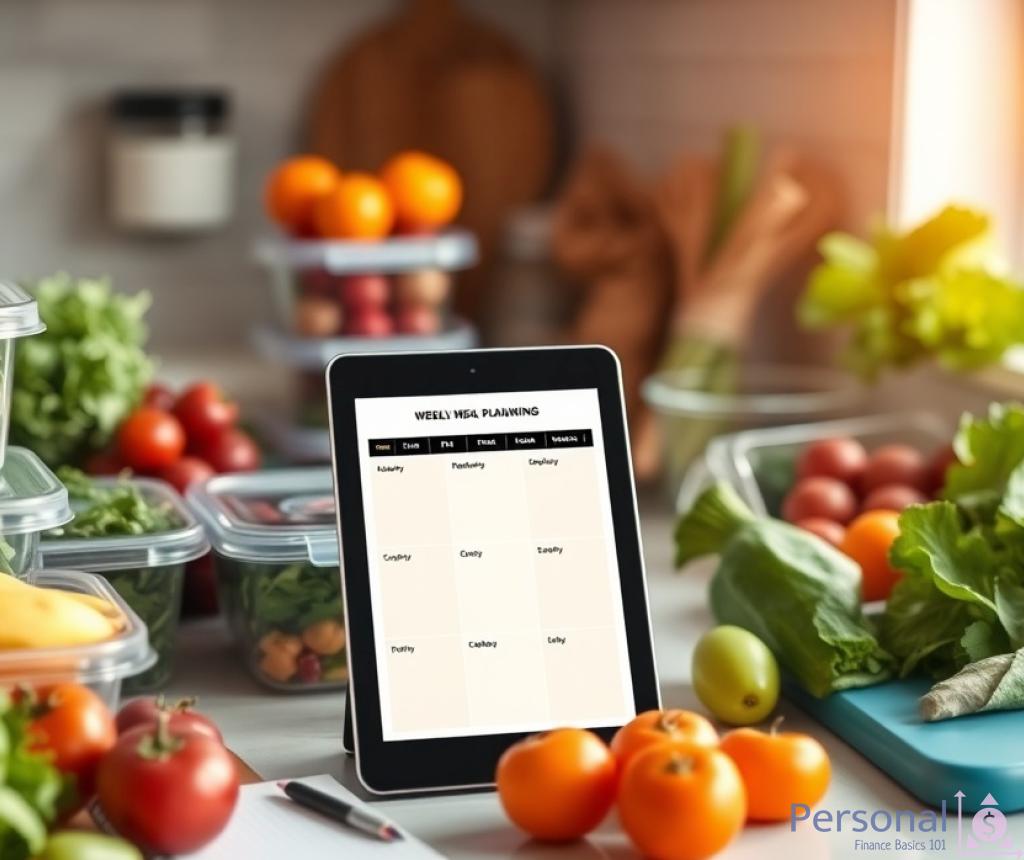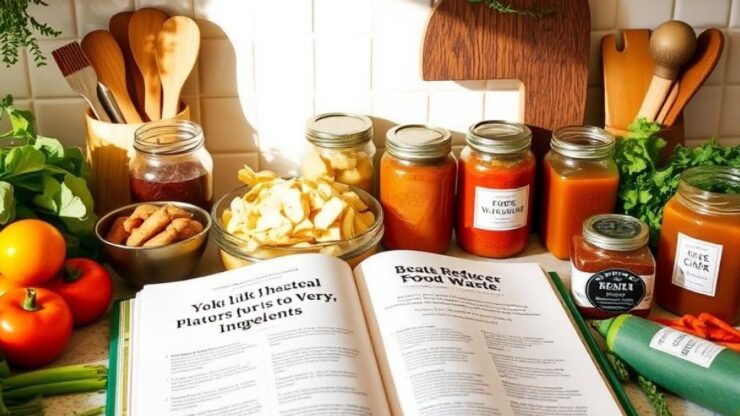Creative Repurposing of Leftovers

The Art of Leftover Transformation
In a world where food waste is an ever-growing concern, the creative repurposing of leftovers emerges as an essential skill for both culinary enthusiasts and everyday cooks alike. Not only does this practice help reduce waste, but it also offers an opportunity to explore new flavors and textures. By thinking outside the box, we can turn yesterday’s meals into today’s culinary delights, ensuring that every ingredient has its moment to shine.
Innovative Ideas for Repurposing Leftovers
Repurposing leftovers can be as simple or as intricate as you desire. With a little creativity, you can transform seemingly mundane remnants into exciting new dishes. Below is a list of innovative ideas to help you make the most of your leftovers:
- Vegetable Stir-Fry: Combine assorted leftover vegetables with a stir-fry sauce and serve over rice or noodles for a quick meal.
- Soup Creation: Use leftover meats and vegetables as the base for a hearty soup. Just add stock and seasonings!
- Frittatas: Whisk leftover vegetables and meats into eggs to create a flavorful frittata, perfect for breakfast or brunch.
- Grain Bowls: Layer leftover grains, proteins, and vegetables in a bowl, topped with a dressing for a nutritious meal.
- Sandwich Fillings: Transform leftover meats and cheeses into delicious sandwich fillings with fresh ingredients.
Meal Prepping for Success
Meal prepping is an excellent strategy for managing leftovers effectively. By planning your meals in advance, you can ensure that ingredients are used efficiently and that nothing goes to waste. Consider implementing the following practices:
| Strategy | Description |
|---|---|
| Batch Cooking | Prepare large quantities of meals that can be divided into portions and frozen for later use. |
| Ingredient Rotation | Use older ingredients first in your meal planning to prevent spoilage and waste. |
| Creative Freezing | Freeze leftover sauces, herbs, and even full meals in portion sizes for easy future use. |
Smart Meal Planning Techniques

In an age where sustainability is at the forefront of culinary discussions, smart meal planning emerges as a crucial strategy in the fight against food waste. By consciously structuring your meals around the ingredients you already have and anticipating future needs, you can create a more efficient kitchen that minimizes waste while maximizing flavor. This approach not only saves you money but also allows you to enjoy a wider variety of dishes without the guilt of excess.
Effective meal planning begins with understanding the ingredients you have on hand. Before making a grocery list, take inventory of your pantry, fridge, and freezer. By identifying ingredients that need to be consumed soon, you can tailor your meal plan to incorporate them, thus preventing spoilage. This practice ensures that you are using what you have, making your meals not only economical but also resourceful.
Strategic Shopping and Ingredient Pairing
One of the cornerstones of smart meal planning is strategic shopping, which involves choosing versatile ingredients that can be used across multiple meals. For instance, purchasing a bulk package of carrots allows you to incorporate them into salads, soups, and stir-fries throughout the week. Pairing ingredients creatively can lead to an array of dishes, transforming a single item into various culinary delights. This method not only enriches your meals but also decreases the likelihood of ingredients going to waste.
Creating a Flexible Meal Schedule
A flexible meal schedule is essential for adapting to changes in your week. Life can be unpredictable, and having a rigid meal plan may lead to waste if plans change. Instead, consider creating a list of meal ideas that utilize similar ingredients, allowing you to shift meals around as needed without compromising on flavor or nutrition. This adaptability means that if you have leftover chicken from one meal, you can easily incorporate it into a salad or a wrap the following day, ensuring nothing goes to waste.
In conclusion, adopting smart meal planning techniques is not just about saving money; it’s a lifestyle choice that empowers you to reduce food waste significantly. By understanding your ingredients, shopping strategically, and maintaining flexibility in your meal schedule, you can cultivate a more sustainable kitchen that celebrates every ingredient you use.
Understanding Food Expiration Dates
Food expiration dates often create confusion and contribute to unnecessary waste in our kitchens. Many consumers misinterpret these labels, leading to the premature disposal of perfectly good food. By demystifying food expiration dates, we can empower ourselves to make informed choices that mitigate waste and enhance our culinary experiences.
To begin with, it’s crucial to understand the difference between various terms used on food packaging. The terms ‘sell by’, ‘best by’, and ‘use by’ can often be misleading. The ‘sell by’ date is intended for retailers, guiding them on how long to display a product for sale. Meanwhile, the ‘best by’ date refers to the quality of the product; it’s an indicator of when the item is expected to be at its peak flavor or freshness. Finally, the ‘use by’ date is a safety guideline, indicating the last date a product should be consumed for optimal safety. In essence, many products can still be safe and enjoyable to eat beyond these dates, provided they have been stored correctly.
Furthermore, understanding these terms allows for better decision-making regarding food storage. For instance, while dairy products may bear a ‘sell by’ date, they can often still be used safely for several days or even weeks after that date if they have been kept refrigerated. Similarly, canned goods can last significantly longer than the date printed on them, as long as the can remains intact and stored in a cool, dry place. Educating ourselves about proper food storage techniques can further enhance the longevity of our ingredients, thereby reducing the likelihood of waste.
In addition to understanding expiration dates, a practical approach to managing food waste is to incorporate a system for monitoring the freshness of your ingredients. Regularly checking your pantry and fridge can help you prioritize the use of older items before they spoil. This habit not only reduces waste but also encourages creativity in the kitchen as you find innovative ways to utilize ingredients that might otherwise be overlooked.
Ultimately, by grasping the nuances of food expiration dates and adopting mindful storage practices, we take significant strides toward reducing food waste. This knowledge equips us to make better choices, ensuring that we respect every ingredient’s potential while fostering a more sustainable approach to our culinary endeavors.
Utilizing Scraps in Cooking
In the quest for a more sustainable kitchen, the practice of utilizing scraps in cooking stands out as a transformative approach. Rather than discarding remnants from your meals, consider the myriad of culinary possibilities that these overlooked ingredients can offer. By creatively incorporating scraps into your cooking, not only do you reduce food waste, but you also expand your culinary repertoire, turning what was once considered waste into gastronomic treasures.
Embracing the Full Potential of Vegetables is a fundamental step in the journey of utilizing scraps. Many vegetable scraps that are often discarded, such as onion skins, carrot tops, and celery leaves, can be repurposed into flavorful stocks or broths. This practice not only maximizes the use of your ingredients but also enhances the depth of flavor in your dishes. For instance, simmering vegetable scraps in water with herbs and spices yields a rich stock that forms the base of soups, sauces, or risottos. By harnessing the essence of these discarded parts, you elevate your meals while minimizing waste.
Transforming Fruit Leftovers presents another exciting opportunity for creative cooking. The peels, cores, and overripe fruits that are often tossed aside can be utilized in a variety of ways. Citrus peels can be candied or used to infuse oils, while apple cores and skins can be boiled down to create a delicious homemade apple cider. Incorporating these scraps into your baking or smoothies not only adds flavor but also contributes to the nutritional value of your dishes. When you begin to view these remnants as valuable ingredients rather than waste, the possibilities for your meals become endless.
Moreover, utilizing scraps encourages a mindful approach to meal preparation. By keeping a scrap jar in your kitchen, you can collect various pieces as you cook, paving the way for innovative culinary creations. This habit not only inspires creativity but also fosters an awareness of the resources at your disposal. As you experiment with different combinations of scraps, you may discover unique flavors that enhance your meals, proving that every part of an ingredient can contribute to a delightful dining experience.
Composting: From Waste to Resource
In our ongoing efforts to minimize food waste and promote sustainability, composting emerges as a powerful tool for transforming kitchen scraps into valuable resources. This eco-friendly practice not only diverts organic waste from landfills but also enriches the soil, making it a win-win for both the environment and our gardens. By understanding the principles of composting, we can effectively convert what would typically be discarded into nutrient-rich compost that benefits our plants and reduces our ecological footprint.
The Benefits of Composting
Composting offers a multitude of benefits that extend beyond mere waste reduction. By engaging in this practice, individuals and communities can contribute to a healthier environment while also enhancing the quality of their gardening endeavors. Here are some notable advantages:
- Waste Reduction: Composting significantly reduces the volume of organic waste sent to landfills, thereby decreasing methane emissions, a potent greenhouse gas.
- Nutrient-Rich Soil: The resulting compost serves as a natural fertilizer, enriching soil with essential nutrients and improving its structure, which enhances water retention.
- Cost Savings: By creating your own compost, you can reduce the need for commercial fertilizers and soil amendments, leading to cost savings over time.
Getting Started with Composting
Embarking on a composting journey is simpler than many might imagine. It requires only a basic understanding of compostable materials and a commitment to maintaining your compost pile or bin. Below are key steps to successfully start composting at home:
- Select a Composting Method: Choose between a compost bin, pile, or tumbler based on your available space and preferences.
- Gather Materials: Collect a mix of green materials (e.g., fruit and vegetable scraps, grass clippings) and brown materials (e.g., dried leaves, cardboard) to create a balanced compost.
- Maintain the Compost: Turn or aerate the compost regularly to promote decomposition, ensuring a mix of moisture and air to foster microbial activity.
- Harvest the Compost: After a few months, your compost will be ready to use when it resembles dark, crumbly soil. Incorporate it into your garden or potted plants for a nutrient boost.
Composting Myths Debunked
Despite its many benefits, composting is often surrounded by misconceptions that deter individuals from attempting it. By debunking these myths, we can encourage more people to embrace this sustainable practice:
- Myth 1: Composting smells bad.
Fact: When done correctly, composting should not produce unpleasant odors. Maintaining a balanced mix of materials and proper aeration helps prevent odors. - Myth 2: Composting attracts pests.
Fact: Compost bins should be managed properly to minimize pests. Avoid adding meat or dairy products, which can attract unwanted animals. - Myth 3: Composting takes too long.
Fact: With the right materials and maintenance, composting can yield usable compost in as little as three months.
In summary, composting stands out as an effective strategy for reducing food waste, transforming kitchen scraps into a valuable resource for gardening. By understanding its benefits, following simple steps to get started, and dispelling common myths, we can collectively contribute to a more sustainable and eco-friendly future.
Disclaimer
This article has been created or edited with the support of artificial intelligence and is for informational purposes only. The information provided should not be considered investment advice. Please seek the support of a professional advisor before making any investment decisions.






